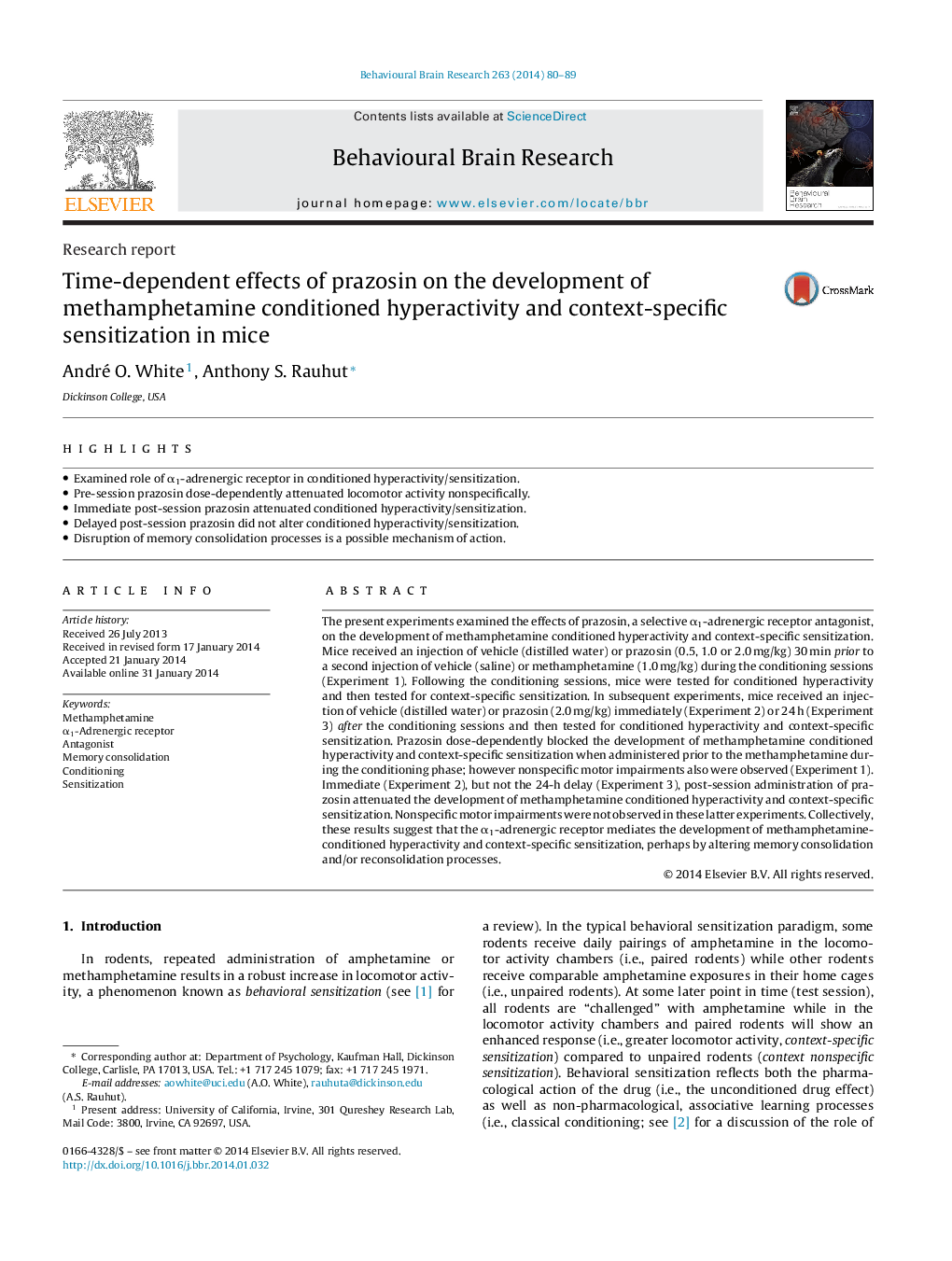| Article ID | Journal | Published Year | Pages | File Type |
|---|---|---|---|---|
| 6258141 | Behavioural Brain Research | 2014 | 10 Pages |
â¢Examined role of α1-adrenergic receptor in conditioned hyperactivity/sensitization.â¢Pre-session prazosin dose-dependently attenuated locomotor activity nonspecifically.â¢Immediate post-session prazosin attenuated conditioned hyperactivity/sensitization.â¢Delayed post-session prazosin did not alter conditioned hyperactivity/sensitization.â¢Disruption of memory consolidation processes is a possible mechanism of action.
The present experiments examined the effects of prazosin, a selective α1-adrenergic receptor antagonist, on the development of methamphetamine conditioned hyperactivity and context-specific sensitization. Mice received an injection of vehicle (distilled water) or prazosin (0.5, 1.0 or 2.0 mg/kg) 30 min prior to a second injection of vehicle (saline) or methamphetamine (1.0 mg/kg) during the conditioning sessions (Experiment 1). Following the conditioning sessions, mice were tested for conditioned hyperactivity and then tested for context-specific sensitization. In subsequent experiments, mice received an injection of vehicle (distilled water) or prazosin (2.0 mg/kg) immediately (Experiment 2) or 24 h (Experiment 3) after the conditioning sessions and then tested for conditioned hyperactivity and context-specific sensitization. Prazosin dose-dependently blocked the development of methamphetamine conditioned hyperactivity and context-specific sensitization when administered prior to the methamphetamine during the conditioning phase; however nonspecific motor impairments also were observed (Experiment 1). Immediate (Experiment 2), but not the 24-h delay (Experiment 3), post-session administration of prazosin attenuated the development of methamphetamine conditioned hyperactivity and context-specific sensitization. Nonspecific motor impairments were not observed in these latter experiments. Collectively, these results suggest that the α1-adrenergic receptor mediates the development of methamphetamine-conditioned hyperactivity and context-specific sensitization, perhaps by altering memory consolidation and/or reconsolidation processes.
